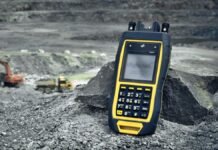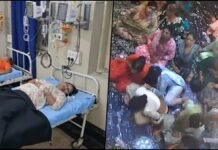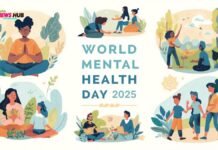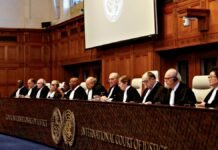
Cape Town: A network monitoring the sequencing of samples in South Africa since the start of the COVID-19 pandemic is closely monitoring changes in the virus. This network is a valuable tool to better understand how viruses spread. At the end of the year 2020, the network detected a new virus lineage 501Y.v2, which later became known as beta form. Another new form has now been identified, known as B.1.1.1.529.
To know more on this topic, Ozair Patel of ‘The Conversation’ Africa got some information from the scientists which he shared. What is the science behind the discovery?
Variety of looks requires a concerted effort. South Africa and the UK were the first major countries to implement nationwide genomic surveillance efforts for the coronavirus in early April 2020. The discovery of the form is done through whole-genome sequencing of samples in which the infection is confirmed.
The process involved checking each sequence received for differences, which is circulating in South Africa and around the world. Vigilance is triggered when many differences are noticed and further tests are done to confirm the same. South Africa is well prepared for this.
The ‘National Health Laboratory Service’ helps a lot. In addition, there are several laboratories in South Africa that can develop and study the actual virus and find out how well the antibodies prepared by vaccination or in dealing with previous infections are able to neutralize the new virus. This data helps to identify new viruses. This year another form called Delta spread to much of the world, including South Africa, where it caused a third pandemic wave.
Recently, routine sequencing by the laboratories of the ‘Network for Genomics Surveillance’ led to the detection of a new lineage of virus B.1.1.529 in South Africa. Seventy samples collected in Gauteng province in mid-November 2021 had the virus. Some cases have also been reported from neighboring Botswana and Hong Kong. The case of Hong Kong is of a traveler from South Africa. The World Health Organization (WHO) on Friday classified B.1.1.529 as having a concern and named it ‘Omicron’ under the Greek-letter system.

Why has there been a worrying pattern in South Africa? We don’t know for sure about this. It certainly appears to be much more than the result of concerted efforts to monitor infectious viruses. One theory is that people with highly sensitive immune systems, and who experience long-term infections, may be the source of the relapse. Why is this version worrying? The short answer is, we don’t know. The long answer is- b.1.1.1.529 has undergone several changes which is a cause for concern.
They have not been observed before in this sequencing and contain more than 30 mutations in the spike protein alone. This is important, as the spike protein itself makes up most of the vaccines. We can also say that the genetic profile of B.1.1.1.529 is very different from other variants of interest and concern.
This form does not appear to be “Delta’s daughter” or “Beta’s grandson”, but rather represents a new lineage of the corona virus. Some of its genetic alterations are known from other variants and we know that they may affect transmission ability or potentiate immunity, but many are new questions and have not yet been studied. It is to be known that cases of B.1.1529 infection have increased rapidly in Gauteng, where the country’s fourth epidemic wave seems to be starting.
It seems to be spreading very fast. By the way, we can’t really tell right now whether the already prevalent version of B.1.1.529 transmits more easily than the worrisome form Delta. COVID-19 is more likely to manifest as a serious, often life-threatening illness in the elderly and chronically ill. But, the population groups often first exposed to a new virus are young, traveling, and generally healthy people. Is there a possibility of protecting against the new form through existing vaccines? Don’t know about this. Known cases include individuals who were vaccinated.
We have learned that the immunity conferred by vaccination diminishes over time and does not protect against infection as much but is useful in protecting against serious illness and death. One of the epidemiological analyzes would be to see how many people have been infected with B.1.1. It is feared that B.1.1529 may evade an immune response, which is extremely disappointing.
Finally, what is known so far about B.1.1.1.529 highlights that universal immunization against severe COVID-19, along with non-pharmacological practices, is still our best bet and will be our best bet for the future? will go a long way toward helping the healthcare system cope during the wave.




















































